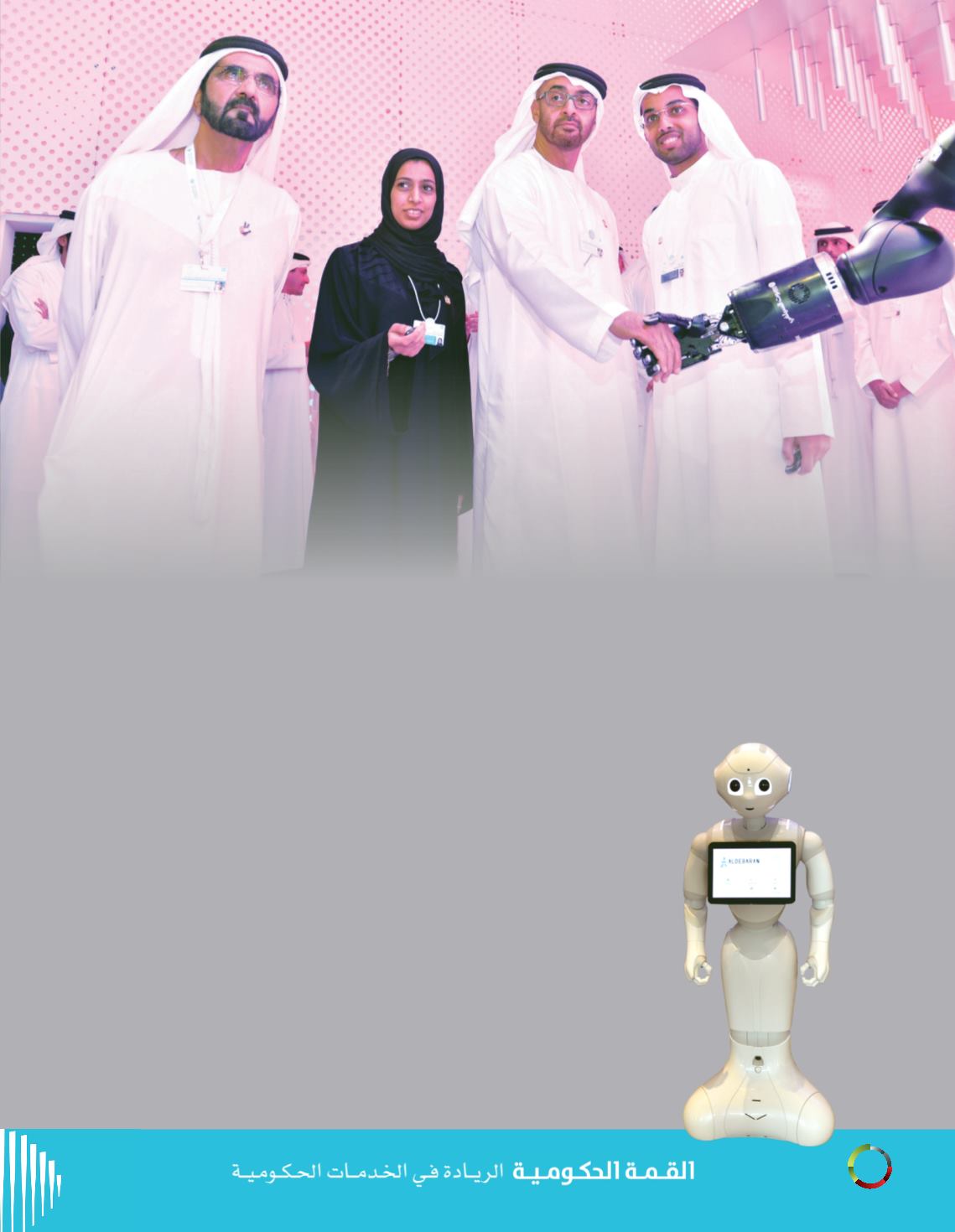
the world to join hands in strengthening
government development. We hope this
annual meeting of the world’s govern-
ments will mark the beginning of a new
era in international cooperation to focus
on the development challenges that the
world faces through an innovative model
of partnership between governments, the
private sector, educational institutions and
research centers,” he added.
“The Museum of Future Government Ser-
vices highlights that the future will belong
to those who can imagine it, design it and
implement it. We cannot wait for the fu-
ture; it has to be designed and built today,”
Sheikh Mohammed underlined.
The Museum features a laboratory for re-
search, design and innovation, particularly
for government entities.
It includes several sections, for example
a futuristic, interactive ‘smart street’ that
can talk to people and provide them with
information they need and a unique futur-
istic ‘Personal Cloud’, developed in coop-
eration with MIT university, which includes
sensors determining the position and
presence of each person to provide the
needed cooling or heating.
The Museum also includes ‘Fitzania’: a
healthy and enjoyable life that encourages
children to play fun games while conduct-
ing a comprehensive medical examination
by medical devices and the “exoskeleton”,
which was synthesized to serve humanity
as it helps elderly or disabled people who
face movement difficulties.
ASIMO, the most advanced robot in the
world developed by Honda, also displayed
its capabilities before His Highness.
The Museum also includes the “virtual-
reality interactive learning lab” which ex-
plores the future of learning by sending a
robot to places like Mars to study and ana-
lyze the location and then send back data
from which students can learn.
Sheikh Mohammed toured the Museum
that presents a vision on the next genera-
tion of future governments and the new
technologies that will be used for the first
time to provide future government servic-
es as well as innovative applications that
will form the pillar of the next generation of
government services.
Although the museum is the first of its
kind, it represents a leading example of
entrepreneurial governments embracing
change and creating futuristic visions for
a better world.
The museum uses design, prototypes
and foresight to create real examples of
change by engaging citizens and govern-
ments and educate them on the uses of
modern technology.
The museum also includes a section on
“laboratory for future services” and self-
driving car concepts that have been de-
veloped to give a glimpse of the future of
the automotive world.
The Museum is also explores the future
of travel services and health care through
the “Health Cafe” that represents the fu-
ture look of the clinic and pharmacy at the
same time. It is equipped with the latest
tools that create an atmosphere of comfort
and relaxation as well as for the manufac-
ture of personalized medicine based on
the results of individual laboratory tests.
The Museum of Future Government Ser-
vices has been developed by an interna-
tional team of 180 researchers, designers
and experts from around the world, and
serves as a new approach that will pave
the way for citizens and governments to
work together to address future concerns.
7
February
2015


